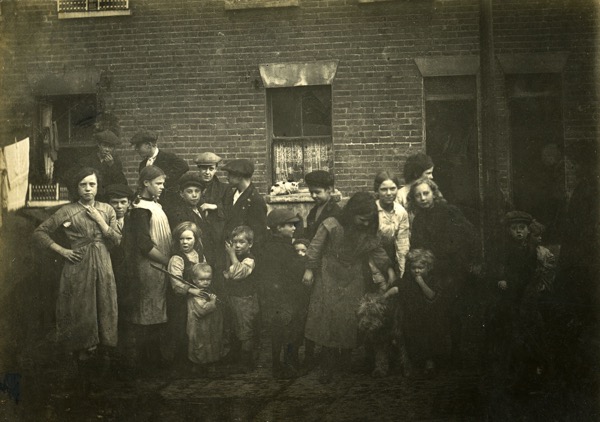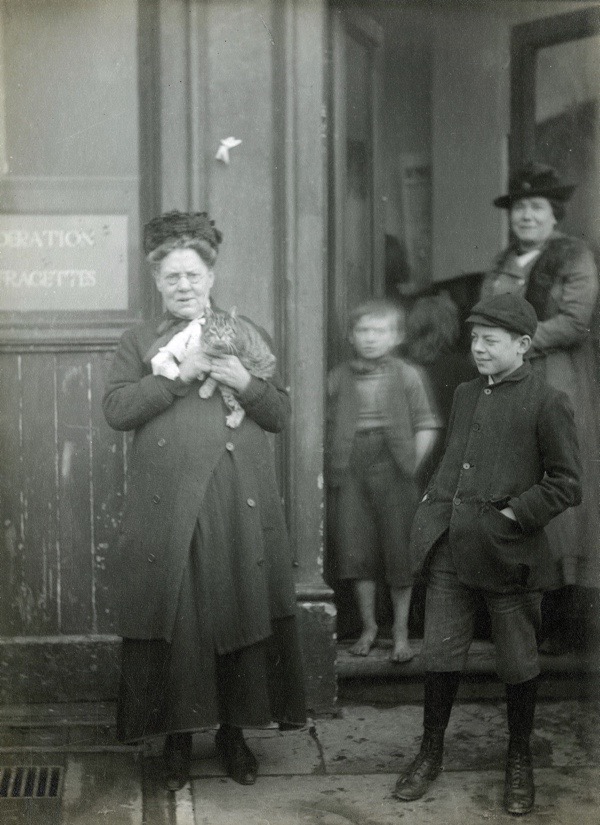The Book, Cat, & Cat Book Lovers Almanac
of historical trivia regarding books, cats, and other animals. Actually this blog has evolved so that it is described better as a blog about cats in history and culture. And we take as a theme the advice of Aldous Huxley: If you want to be a writer, get some cats. Don't forget to see the archived articles linked at the bottom of the page.
March 22, 2019
March 22, 1874
Norah Smyth, (March 22, 1874 to 1963) documented her suffragette activism while establishing a legacy as a photographer. In the words of an essay published at Spitalfields Life:
'Born Norah Veronica Lyle-Smyth in 1874, she was the daughter of a wealthy Liverpool grain merchant, one of eleven children. Her father was kind but overbearing and she did not leave home until after his death. Instead, she developed a talent as a sculptor, carving panels behind the altar in her local church and cutting her own gravestone, with the date left blank. She sometimes smoked a clay pipe and owned a pet monkey called Gnome. In 1911, she moved to London and joined Edith Craig’s Pioneer Players, known for its plays on the subject of women’s suffrage. She also worked as an unpaid chauffeur to Emmeline Pankhurst, the leading figure of the Women’s Social and Political Union. Here she met her daughter Sylvia Pankhurst and they shared a residence in Notting Hill, beginning a friendship that lasted over ten years.
...
The outbreak of war in August 1914 threw the East End into turmoil. Factories closed, unemployment and the inflation of food prices caused widespread distress. Desperate women called at The Women’s Hall, begging for help. The ELFS responded by setting up cheap restaurants, free mother and baby clinics, nurseries and a cooperative toy factory with crèche attached. 400 Old Ford Rd became a milk distribution centre for hungry babies, followed by others in Bow, Poplar, Canning Town and Stepney. A disused pub, the ‘Gunmaker’s Arms’, was reopened as a nursery, ‘The Mother’s Arms’, with an innovative Montessori school. Deeply affected by the poverty in East London that was made even worse by the war, Smyth spent her entire inheritance supporting this work.
Smyth’s photographs can be seen within a tradition of Victorian street photography that portrays East London through the eyes of outsiders. Crowds of children in Bow streets stare at the photographer with curious glances, reminiscent of images by John Thomson or John Galt. Yet other depictions differ, girls and boys... look at the photographer with an assertive immediacy. Groups of working mothers and their babies pose informally for the camera. ... Smyth’s intimate, familiar photographs reveal an everyday world of which she was a participant rather than an external observer.
....
In Spring 1916 a million soldiers were conscripted, many of whom did not have the right to vote. This changed the suffrage debate, and the ELFS began calling for universal adult suffrage and campaigning openly against the war. Smyth’s photographs cease around this time. It is possible that later images did not survive. Equally, it seems likely that the efforts of keeping the cost price restaurants, Mother’s Arms, Toy Factory and baby clinics going alongside the growing anti-war campaign meant that photography was put aside.
By the time some women finally gained the vote in 1918, the Russian Revolution had changed everything. The East London suffragettes were calling for international Socialism and trying to keep their vision of East End militancy alive. Yet political debates alongside financial hardships led to a dispersal of its members and the closure of the Dreadnought [newspaper] in 1924.
Smyth left for Florence where she worked for the British Institute, then joined the Times of Malta. In 1945, she went to live with her sister Una in County Donegal, leading a quiet rural life until her death in 1963. Her papers are lost, so we do not know whether she continued to take photographs later in life. ...
The East End suffragettes fought not only for the right to vote but also for a radical transformation of British society. Through self-organised, community action across East London, working class women battled for social justice during the hardships of the First World War. Norah Smyth’s remarkable photography celebrates their history.'
Here are some examples of this photography, and the link above has more.
‘The home they fought for’ – children come to play with Sylvia Pankhurst’s dog Jim c 1915
Mrs Schlette holding a cat outside the war relief clinic at 53 St Leonard’s St, Bromley
Subscribe to:
Post Comments (Atom)


No comments:
Post a Comment